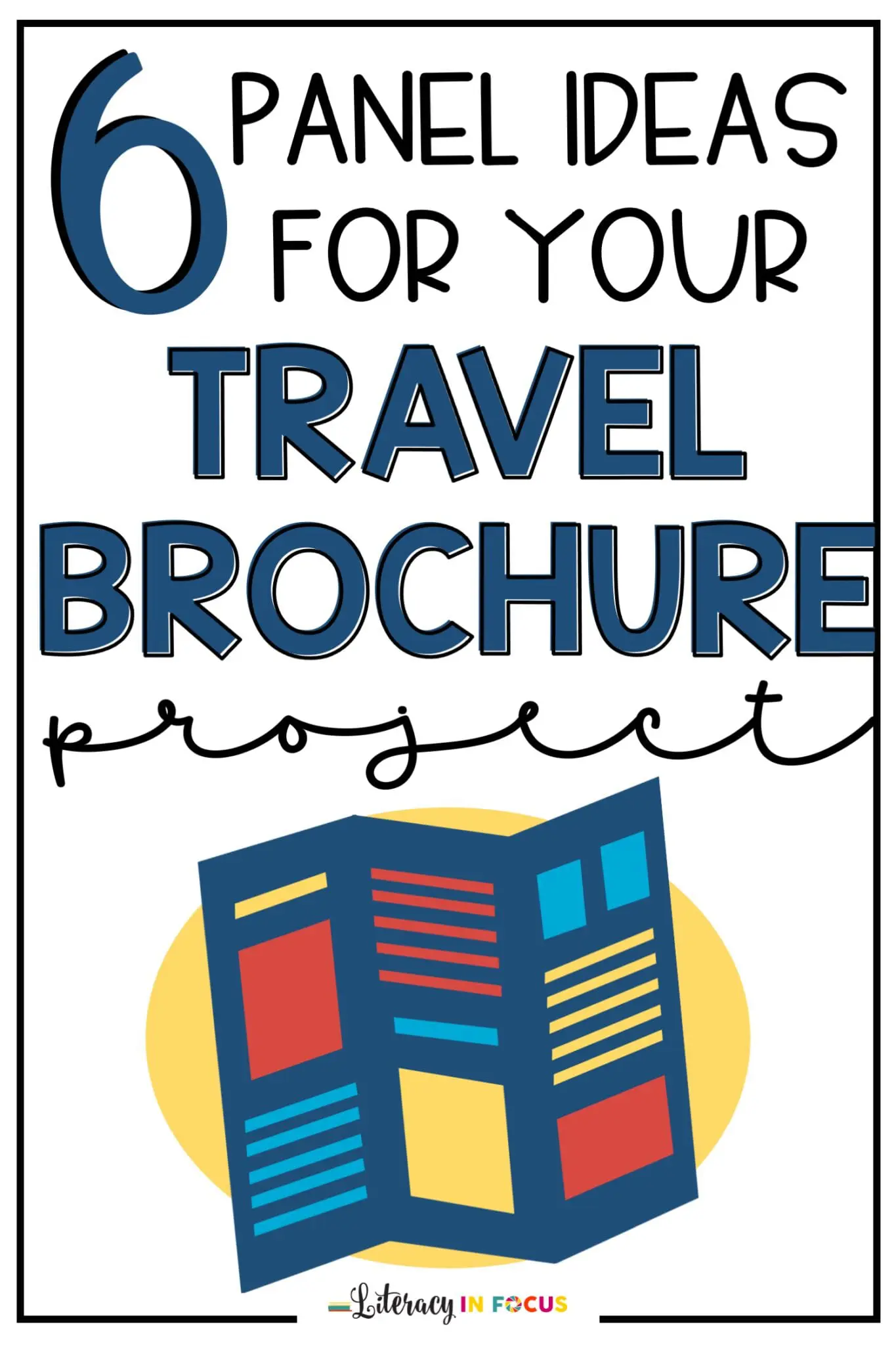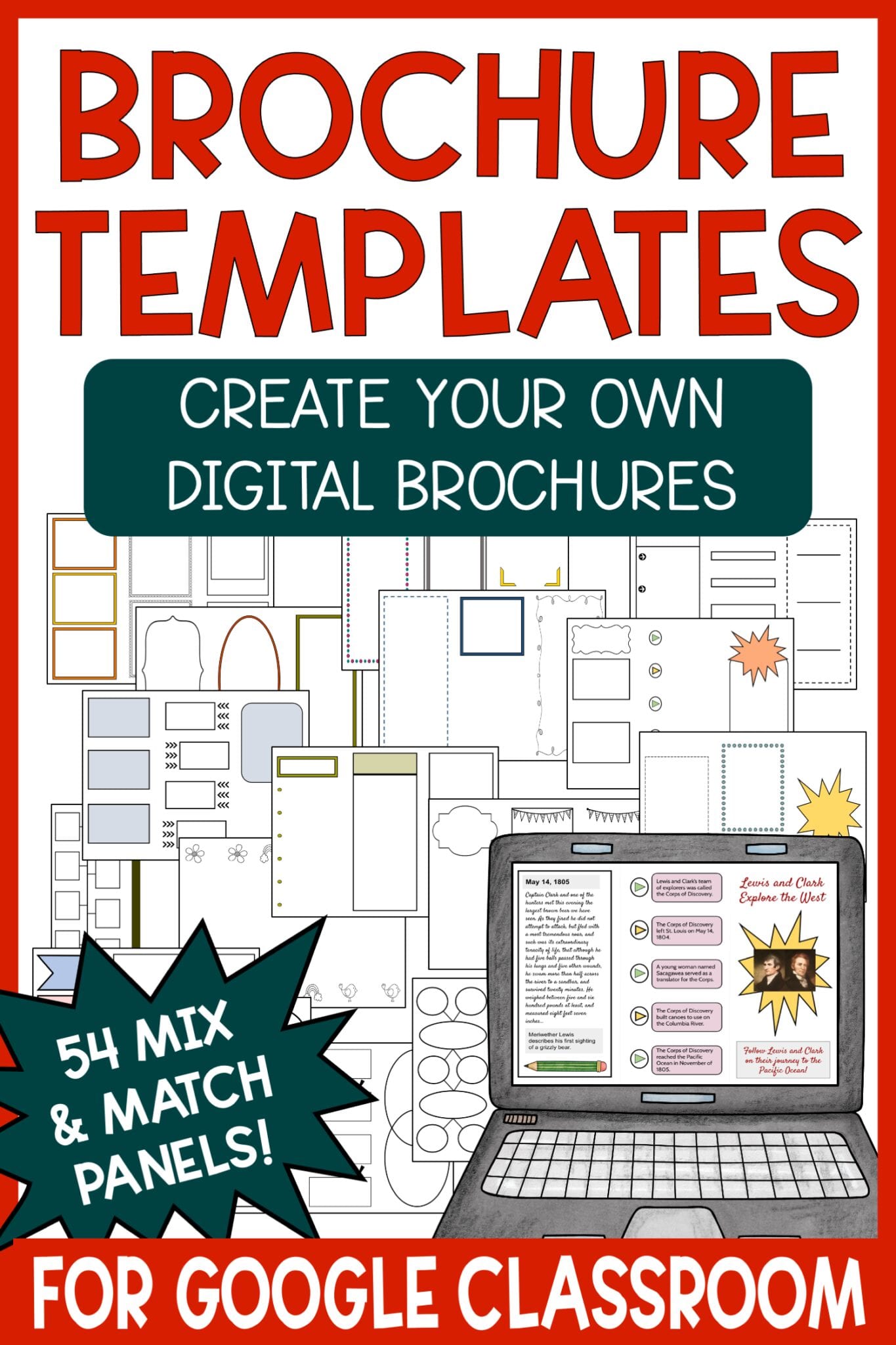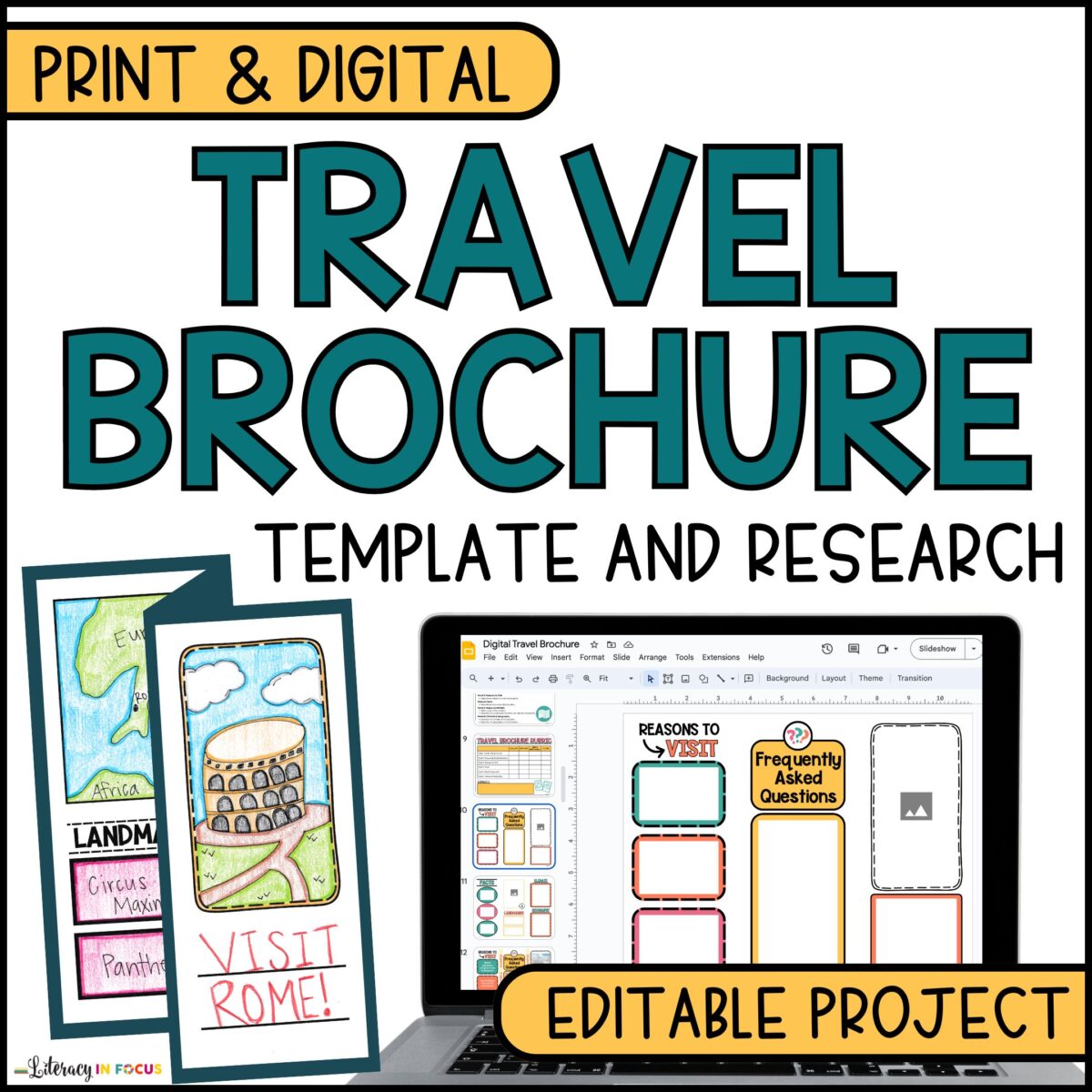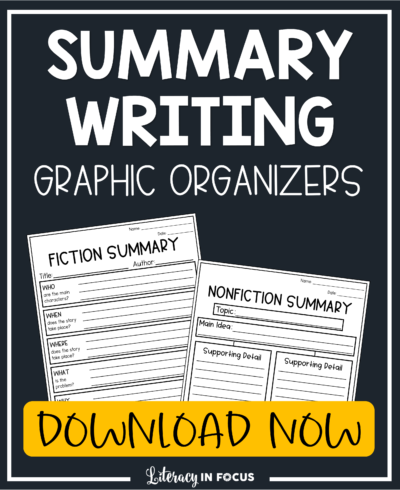
Travel brochure projects stand the test of time because they are so versatile. They work well across content areas and grade levels. It’s also fairly easy to align your brochure project with Common Core and state standards. Finally, travel brochure projects appeal to a wide-range of learners; they are easy to customize and differentiate as needed. Ideas for each panel of a travel brochure project are listed below. Higher order thinking skills are sprinkled throughout to balance rigor and creativity.
COVER PANEL
The overall objective of the project is for students to create a travel brochure that entices others to visit the location. The cover panel should reflect this objective. Students will need to:
- Add a brochure title and picture.
FREQUENTLY ASKED QUESTIONS
Frequently Asked Questions: The frequently asked questions portion of the brochure project requires students to think critically about the location. Based on what they have learned about the location, students will need to:
- Write two open-ended questions (with answers) about the location.
REASONS TO VISIT
Persuading travelers to visit the location gives students an opportunity to apply what they have learned. This portion of the brochure will require students to make use of the information in a context different from the one in which it was learned. Students will need to:
- State three reasons to visit the location.
FACTS
Requiring students to provide facts will show that they have a clear understanding of the location. To do this, students will need to:
- Include three accurate facts about the location.
MAP & LANDMARKS
Panel five gives visual learners a chance to connect with the geography of the location. Also, incorporating map skills is another way to embrace differentiation and support cross-curricular learning. Students will need to:
- Add a map and two landmarks travelers can visit at the location.
GEOGRAPHY & CLIMATE
The last panel requires students to describe the climate and geography of the location. Diving deeper into the climate and geography of the location broadens the scope of learning. It sets the stage for students to connect climate and geography to other aspects of the location. To complete this panel of the brochure, students will need to:
- Describe the climate and geography of the location.
Additional Lesson Components
- Research Guide: Providing students with a research guide will assist them in finding and recording relevant information for their travel brochures. It will keep students focused and on-track throughout the research portion of the lesson. Before students start researching a location for the travel brochure, take a minute to review the importance of using credible sources. If students need more in-depth instruction, you can teach them about website credibility with this free evaluation checklist.
- Reference List: A reference list with specific source requirements (author, title, publisher, date published, and URL) will reinforce the importance of evaluating and recording sources during the research process. Advanced students can use easybib.com to generate a citation for each source.
- Brochure Directions and Rubric: Ensure student understanding by providing clear directions and grading expectations for the travel brochure project.
- Examples: Showing students examples of past brochures is helpful, but not necessary. You can use examples to inspire students and give them a concrete idea of what the finished project might look like.
Print and Digital Travel Brochure Project
“I have used this resource for several years at the end of the school year to wrap up our US History unit. Students are engaged and really enjoy the choice and collaboration.” -Mandy





